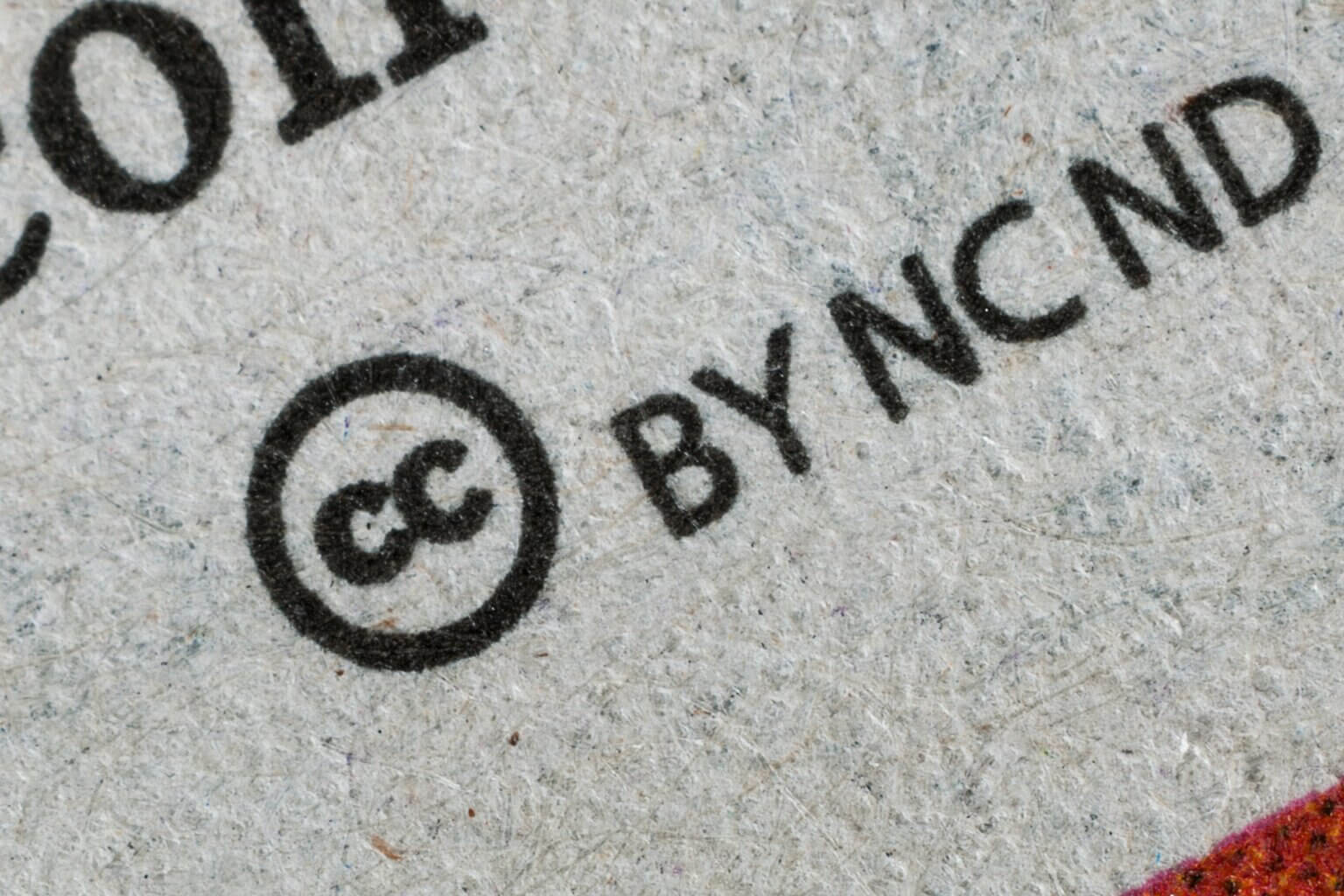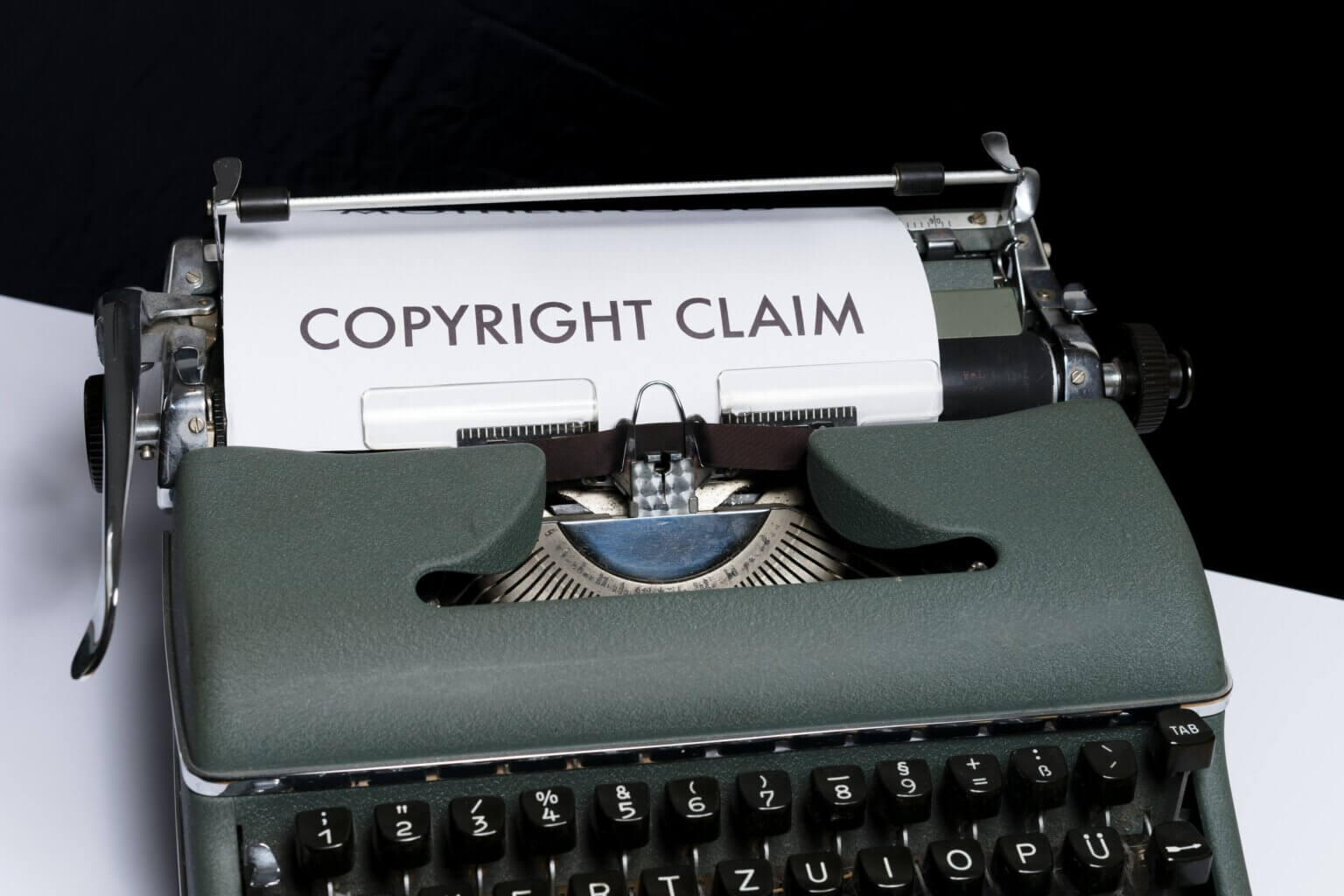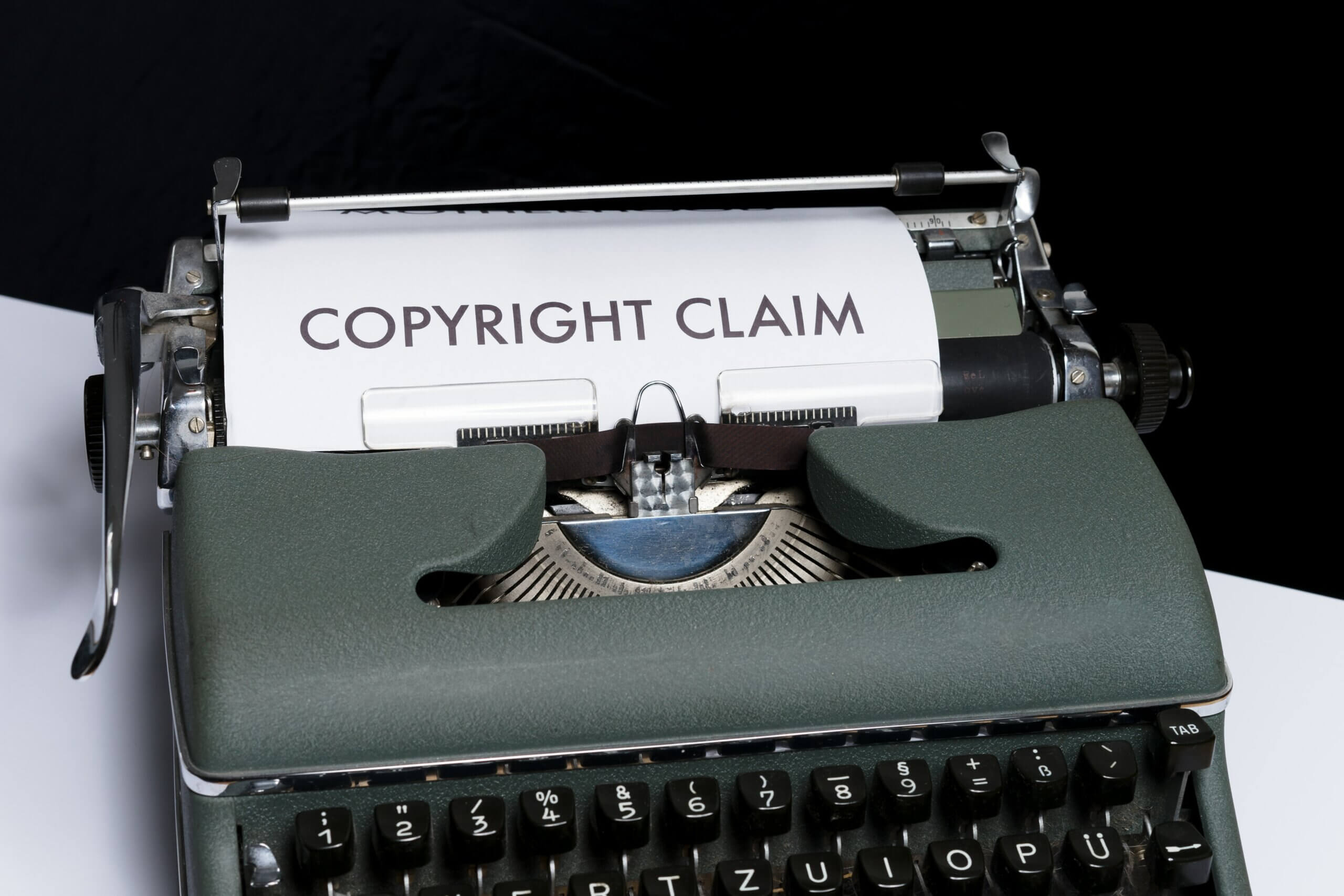[Updated February 7, 2024: 1. Added how to properly form a copyright notice. 2. Added information on protecting visual works from AI.]
Note: Copyright is a widely-embraced Western idea and legal construct. However, when it comes to a few countries, all bets are off. Also note: I am not a lawyer, but I do offer (a bit of contrarian) food for thought, and quality, helpful links below. Further, this article was given the thumbs up by two lawyers specializing in Copyright Law.
I’m Guilty of Copyright Infringement
I just realized I’ve done to others what I don’t want done to me: unwittingly stealing copyrighted work and re-posting it.
How? A few times I’ve included snippets—or whole copies—of poems by living poets, as accompaniments to my photographs. Copyright protection lasts for the creator’s lifetime + 70 years. (Unless they’ve given part or all of their rights away.)
Oops. I won’t be doing that again.
Working (Free) for Exposure
This week I found this terrific poem by Yolanda Wisher, and wanted to include it, whole, with this dandelion (er, salsify) photograph I created on Monday. For the first time, however, it occurred to me to look up the poet, and write Ms. Wisher to ask permission.
She declined.
I respect her decision. After all, what would she get in return? The rightfully maligned “working (free) for exposure.”
While I would never have framed my request that way, I realize that’s essentially what I suggested. The notion of working for free, in exchange for exposure, is another way of asking someone to trade their education, experience, expertise and effort for … nothing.
Most young creatives in Western countries experience this idea. It’s usually when older, wiser capitalists—or the creatives’ unwitting friends—use this nefarious approach to try to avoid paying for labor.
“Hey college-age designer, why not design my start-up’s business logo? We won’t pay you, but we’ll give you credit, and it’ll be great exposure!”
— Cheapskate
The answer should nearly always be no.
Hint: Ask the requestor to explain more about the benefits they’re offering you. Unless they can immediately and clearly spell them out, demonstrate their true value, and that they’re reliably forthcoming, say no.
After all, when’s the last time your plumber repaired your leaky faucet for free, to get “exposure?”
Don’t work for free. People die of exposure.
— Anon.
BTW, after the poet’s self-respecting response, I briefly considered offering to pay her to let me use her poem. Then I decided to spend my money more carefully. (Besides, I’ve been known to write my own poem for a photograph, and will undoubtedly do so again.)
Types of Copyright Protection
From the perspective of a creative, let’s consider what it means to protect your intellectual property, versus giving some or all of your rights away.
Creative Commons
To quote Wikipedia: “Creative Commons (CC) is an American non-profit organization and international network devoted to educational access and expanding the range of creative works available for others to build upon legally and to share.”

In other words, CC licenses make it easier to give your intellectual property (IP) rights to someone else, just like Umberto did for the photo above.
Now, some folks treat their creativity like a hobby, freely sharing it, and there’s absolutely nothing wrong with that. But the moment you want to expand your hobby into a possible revenue stream, consider taking copyright seriously too. Choose your copyright and licensing approaches wisely.
To me, the use of Creative Commons licenses is, at least somewhat, propelled by the idea of “working for exposure.” You make something, and give some (or all) of your rights away. You hope that doing so will bring you exposure … and perhaps money, eventually. While that may happen, it’s a crap shoot, so shoot carefully.
I have declined to use Creative Commons licenses to permit the re-use of my work. For my own protection, I opt to retain full copyright ownership. Part of the reason is the complexity and ambiguity of Creative Commons (CC) licenses, which I’ve thoroughly explored. While they are widely embraced, the reality is that Creative Commons licenses have some issues.
CC licenses are generally misunderstood
For example:
- Have you grasped the panoply of available CC licenses and their meanings?
- Do you know how CC-BY-NC is different from CC-BY-SA?
- What about CC-BY-NC 2.0 vs. CC-BY-NC 4.0? (Yes, license definitions and coverage are updated. Knowing which version a license falls under adds complexity.)
- Do you know how derivative licenses are used? Are you ok with not knowing if derivative creators (using your works) will continue to license them properly?
- Are you solid on, or down with, the huge number of FAQs needed to understand Creative Commons licensing?
- (Is your head spinning yet?)
CC is relatively untested legally
When a CC license states that a photograph may be reused non-commercially, what does that even mean? It seems obvious that the photo shouldn’t be printed on a T-shirt and sold. But what about the photo being used to illustrate a post on someone else’s blog? What if they’re showcasing their talent, hoping to be noticed, and thus gain clients? Is that commercial use? If there’s advertising on the blog … or infotainment site, or social media, or newspaper site, that means there are earnings. Earnings = commercial. Should a CC-BY-NC licensed image be used freely in those cases? Often, they are.
Thus far, this ambiguity is not cleared up in CC documentation, nor by legal precedence.
CC is sometimes problematic
Let’s say you’ve granted permission for folks to use your photograph, art, song or poem, as long as they give you credit by name (CC-BY). What if you discover a political candidate, whose beliefs are your polar opposite, is using your work to promote their message? Too late, they can.
Once you opt for any of the CC licenses, they’re irrevocable for as long as they’re enforceable.
I understand the good-will intention behind Creative Commons. However, in the 20 years of its existence, it has become an unwieldy behemoth that’s muddied the waters of intellectual copyright protection. I’m not diving into that kiddie pool. I feel safer, and less troubled, by choosing to go with good old traditional copyright protection, and by taking other steps to protect my work.
But I’m particular. I don’t want that awful politician to use my creations, without asking permission first. Boosting a post of mine, as is done on Mastodon, is one thing. Taking my works and repurposing them willy-nilly, is something else entirely.
YMMV. You do you.
Traditional Copyright Ownership
Long-standing, “All Rights Reserved” copyright law aims to fully protect intellectual property, as clearly defined and tested by decades-to-centuries of international law, among the many countries which embrace and adhere to the law.
In brief, original creative work is automatically copyrighted the first time it’s published (physically or online). Officially registering copyright can increase protection (a good idea), but isn’t required. More on that below. Original work, as well as appropriately derivative work, is protected for the creator’s lifetime + 70 years. (There are, of course, some exceptions and limitations.)
When a creative sells an original work, say a painting, they still retain full copyright, and can make copies and sell them. The buyer can’t. That is, unless the creative and the buyer have signed a carefully worded contract or agreement, specifically transferring some or all intellectual property ownership to the buyer (or another party, such as an employer).
Note: Be careful about implied licenses where a creative: “(1) creates a work at another person’s request; (2) delivers the work to the other person; and, (3) intends the other person to copy and distribute the work. If the answer to all of these questions is ‘yes,’ a license will likely be implied.”
Copyright Protection, Infringement, and Enforcement

Protection
The only foolproof way to protect your creative work is to never put it on the Internet, never share it anywhere, and to keep it hidden away during your lifetime, like Vivian Meier did with her photography. Most people don’t want to do that.
If you want to know your options in protecting your photographs / artwork, this Pixsy article, “The Ultimate Image Protection Guide: 13 Tips To Prevent Image Theft” is pretty comprehensive. TL;DR: if you want to both display and better protect your work from infringement, the best methods are to register copyrights for your work, display your copyrights, make statements about owning and enforcing your copyrights, and make it harder to copy your work. Read the linked article!
Further, copyright lawyer Alan Harrison points out that Section 411 of the U.S. Copyright Law “provides that you need a registration (or at least a “preregistration”) in order to institute a suit for most types of copyright infringement.” So register your work, published and unpublished alike.
Visual artists in the U.S. can learn about registering both published and unpublished works here. If you’re a performing artist, writer, programmer, etc., you can also register your work.
So how do you form a copyright notice? In short, you need to include the © symbol (Option+G on the Mac, Ctrl+Alt+C on Windows), the year the creative work was first published, and your name. For example: ©2023 Marlene Breitenstein. See more details about properly forming your copyright notice, courtesy of the Copyright Alliance.
I list additional resources on copyright and intellectual property below.
Infringement
With artificial intelligence (AI) in the news the last few months, there’s been a loud discussion over the scraping and use of creative work for AI training. (I talk about how to shield your work from AI below.)
However, that’s just the latest issue. The theft and misappropriation of work by all kinds of living artists is a long-standing problem, especially when it comes to social media sharing, and commercial use in products for sale. A quick search of “stole my art, sold it” turns up countless reports.
Unfortunately, the onus is usually on the artist to take pains to protect their work, and to pursue infringements of their intellectual property rights. Doing so costs time that could better be spent creating or simply living life, and can also cost money. Good news: the financial side of enforcement is better than it used to be, more about that below.
The internet is rife with popular entertainment web sites. They make advertising money off repurposed content (looking at you, social media), while usually giving none to the creators.
For example, by pure chance I discovered that the web site BoredPanda used two of my photographs without permission, in an article about Burning Man. (When a friend sent me the article, they didn’t even realize my photography was part of it!) This week, I used my valuable time to send a removal request by email … which hasn’t yet been answered. The web site’s owners, based in Lithuania, earn revenue off advertising. Are any of the original content creators, whose work they repurpose, getting a cut? I certainly haven’t received compensation. Anyway, I’m waiting for a response. If none is forthcoming, I’ll be submitting a DMCA Takedown Notice. [Update: BoredPanda removed my images, but didn’t communicate with me at all about it. I only know because I checked. Not impressed.]
Enforcement
How does one actually get help with enforcing their intellectual property rights? This may depend on where you are, and where the infringement occurred. (If you didn’t read it, see the paragraph above for an example.)
If you’re a photographer, or other creative, and have identified an infringement, check out the Professional Photographers of America’s Online Copyright Infringement Assistance. They also answer many copyright questions in their FAQ, and offer other enforcement help.
When simpler methods don’t resolve an infringement issue, you may have to resort to taking legal action. Luckily, in the U.S., a new law—the CASE Act—passed in 2020, has finally created a low-cost way for artists and musicians to legally pursue copyright infringement claims. For small claims under $30K value, check out the U.S. Copyright Claims Board to learn about the process.
In some regions, there are Volunteer Lawyers for the Arts, who help creators pro bono.
Elsewhere, a web search will put you in touch with your country’s laws, and lawyers who work with copyright infringement, in your part of the world.
Shielding Your Visual Creations from Artificial Intelligence (AI)
Much to the detriment of the planet and the chagrin of all kinds of creators, AI is here to stay. That means nearly everything you put on the Internet is potentially exploitable for AI training.
For example, in 2023 Meta—the parent company of Facebook, Instagram, WhatsApp and Threads—announced that they’ve scraped public Facebook and Instagram posts to train their AI. According to their privacy policy, content posted on their services may be used to “improve” their products.
Elsewhere, Adobe’s privacy policy (as of February 2024) states in the section titled “Disclosing to Data Processors” that they “will also disclose your personal information to […] providers of artificial intelligence technologies that record and analyze your content or communications […].” While Adobe claims they’ve never used user content “in the cloud” to train “generative AI,” whether their data processors do is unclear. Nevertheless, through your Adobe account’s Data and privacy settings, you can opt-out of this processing under “Content Analysis,” where it says, “Adobe may analyze your content using techniques such as machine learning (e.g., for pattern recognition) to develop and improve our products and services.” Machine learning is a subset of AI.
Also, take special note the “in the cloud” specific above. If you’re a creative posting to Adobe’s Behance service, or their Adobe Stock images services, your work may indeed be used to train AI.
So how would you know, anyway? One way is to check Have I Been Trained?. While you’re there, you can also create an account to opt-out of AI training data sets, for any companies that decide to listen. << Sarcasm.
There are possibly thousands of companies engaging in AI and machine learning activities with your content. If this gives you pause, you’re not alone. Your options are to manage your data, by doing one or more of these:
- close one or several accounts (as I did on Facebook, despite living an ocean away from most of my family and friends)
- delete all of your creative content (as I did on Instagram, while I decide the fate of that account)
- opt-out of the processing of your data and creations wherever possible (as I did with Adobe)
- convert your accounts to private-only (so only followers will see your content; fine if you don’t seek a wider audience)
- mask your work with Glaze (to hide your creative style from AI)
- and perhaps even Nightshade your creations (to poison AI models that scrape your work)
Glaze and Nightshade
Visual artists currently have at least two tools at their disposal to thwart their images from being co-opted by AI scraping.
The first is Glaze, a free tool developed by folks at the University of Chicago. Glaze adds subtle changes to your images, intended to mask your style when AI digests your work.
Second is another free tool they’ve developed called Nightshade, which poisons AI by nearly invisibly altering an image to “distort feature representations” in AI models. In other words, you process an image of a cow, and Nightshade subtly changes it so that AI thinks cows look like a leather purse lying in the grass. Fed enough of these cow+purse images, and AI gets poisoned and confused as to what a cow actually looks like. Given that it only takes about 100 images of an artist’s style to train AI how to mimic, it’s encouraging that perhaps a relatively small number of Nightshaded images of a particular subject could effectively poison AI models.
I believe my intellectual property is worthy of protection. Therefore, I am testing these tools presently to see if I’m okay with the changes made to my images. Because processing can take a long time, I’m running these tools after I’ve finished using my computer for the day.
The team at the University of Chicago plan to combine Glaze and Nightshade into one tool, but as of this update (February 2024), they remain separate. The tools will also undergo regular development to keep up with AI advancements.
Free Copyright Resources
For further details on copyright and intellectual property, check out these offerings:
- For an overview on intellectual property, sign up for a free webinar on Intellectual Property Basics and Helpful Resources, offered by the U.S. Patent and Trademark Office. They’re scheduled monthly.
- The Copyright Alliance, an organization for the copyright community, offers helpful information, education and assistance to creators of all stripes. Consider joining, membership is free.
- Learn more about intellectual property on your own schedule, and possibly in your own language, through the IP eLearning Modules. They’re offered by the Global Intellectual Property Academy (GIPA).
- For international copyright law, and related topics, see the World Intellectual Property Organization (WIPO).
- LegalZoom goes in-depth into Intellectual Property.
Another option: get the scoop on copyright in person, from a knowledgeable human (lawyer), and you may benefit from being able to ask questions. Look into your state’s or country’s legal organizations for artists. For example, when I lived in Washington, D.C., I discovered the Washington Area Lawyers for the Arts. They offer free, periodic talks on copyright protection for creatives. Many U.S. states have related organizations, listed on this Wikipedia article about Volunteer Lawyers for the Arts. Here in Germany, I discovered a similar group of lawyers as well (though I can’t locate it presently, bother!). Look around and see what you find.
Trademarks
While it’s outside the scope of this post, if you’re a creative in the U.S., you might also want to look into trademarks and patents for musicians and artists, regarding branding and protecting your business, including your artist name. WIPO also discusses international trademarks. (Confused? Here are the differences between trademark, patent, and copyright.)
I hope this you’ve found this post helpful!
Thanks for your time and attention, both are valuable. 🙏🏻
I invite you to view my photographs and paintings, and to learn more about me.
If you liked this post, you have options:
- Check out the art available in my shop!
- Buy me a coffee (I’d be so grateful!), or check out my Patreon (coming soon!).
- Sign up for my monthly newsletter, full of delicious tidbits.
- Follow my blog with RSS, using a feed reader like Feedly.
- Browse my other blog posts.
©Marlene Breitenstein. I welcome your inquiries about purchasing, licensing, or republishing my work. I take my intellectual property seriously. This post and its contents, unless otherwise noted, is owned by Marlene Breitenstein. It is not to be reproduced, copied, or published in derivative, without permission from the artist.




